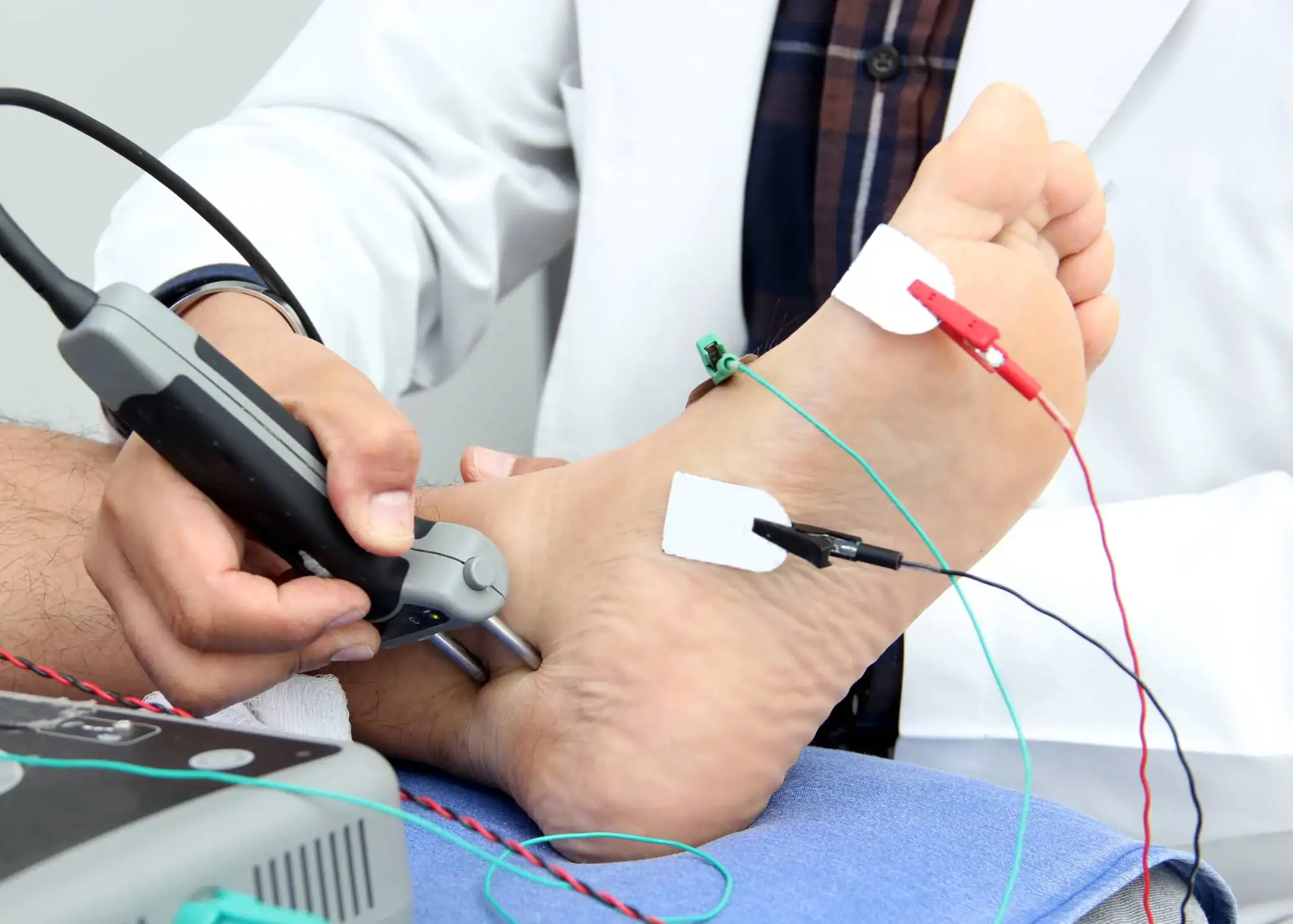Advanced nerve and muscle testing that pinpoints exactly what’s causing your pain, numbness, or weakness.
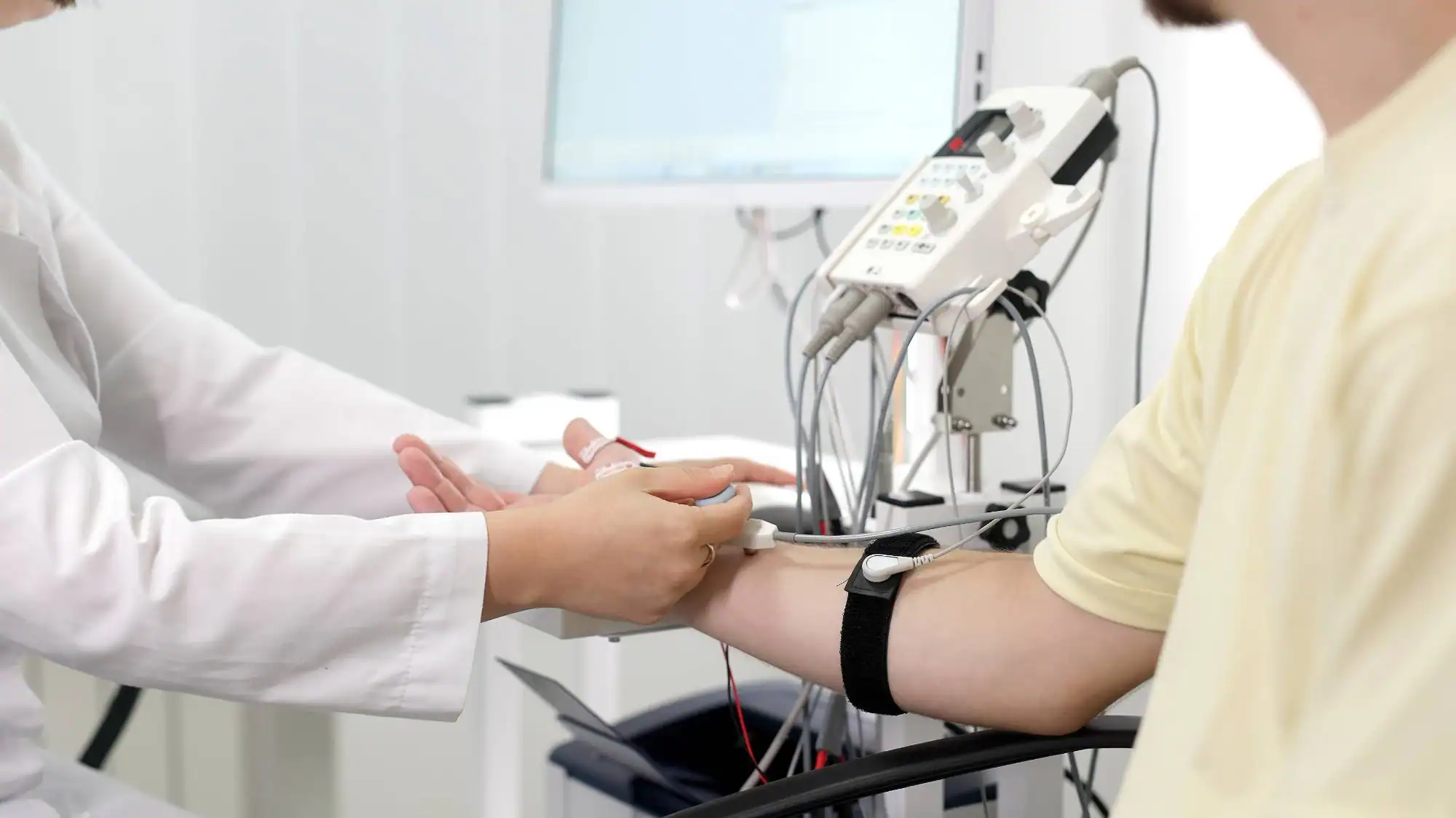
Reviews
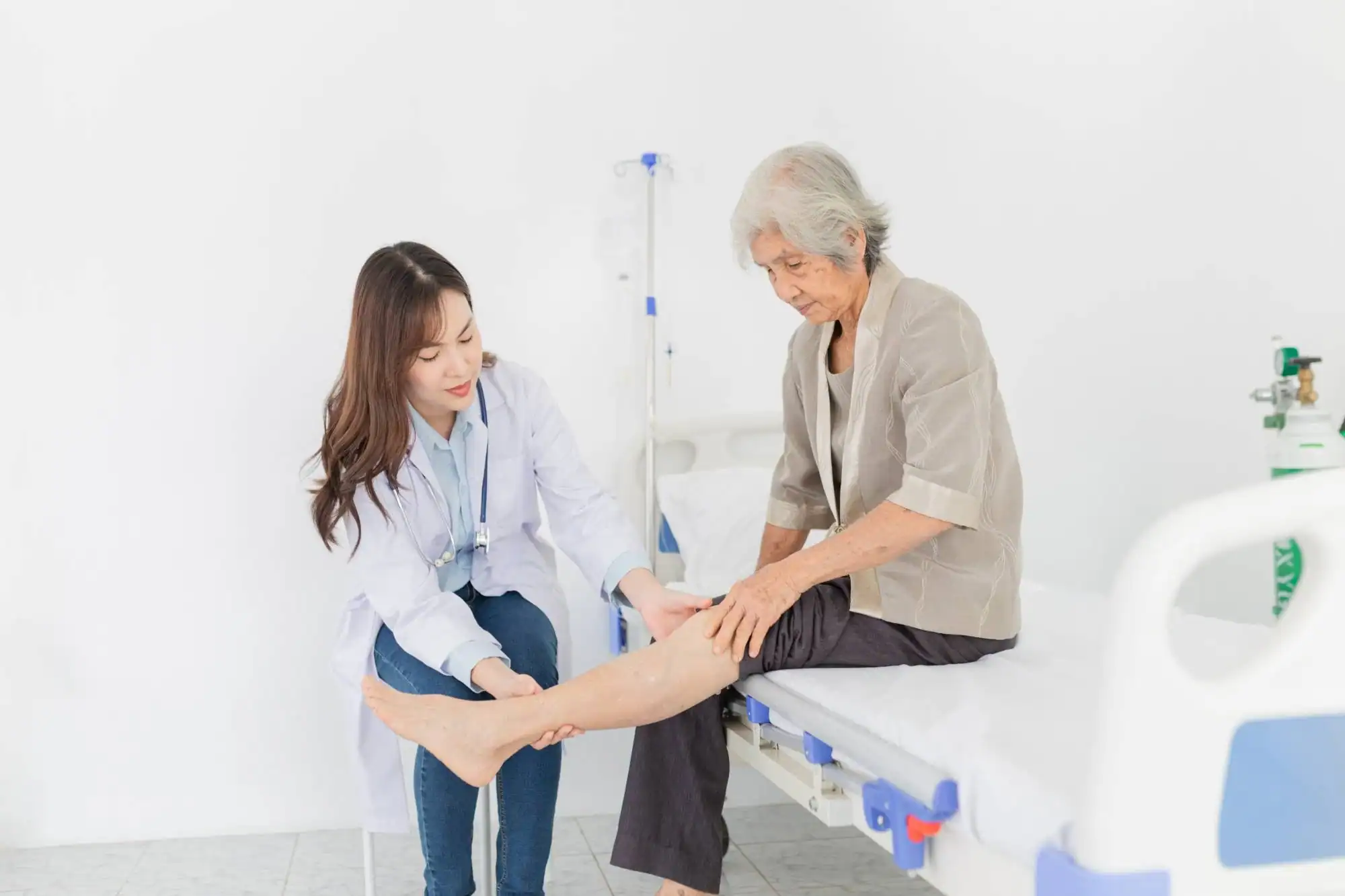
You’ve been dealing with numbness in your hands for months. Or maybe it’s that shooting pain down your leg that keeps you up at night. Your regular doctor says “let’s wait and see,” but you need answers now.
Nerve and muscle testing gives you those answers. Through electromyography and nerve conduction studies, we measure exactly how your nerves and muscles are functioning. No more guessing. No more wondering if it’s all in your head.
When you know what’s actually happening in your body, you can make real decisions about treatment. You can stop worrying about worst-case scenarios and start focusing on getting better. That’s what proper diagnostic testing does – it turns uncertainty into a clear path forward.
NY Spine Medicine has been serving the Great Kills community and broader Staten Island area with specialized neurological care. Our team focuses specifically on diagnosing complex nerve and muscle conditions that other providers often struggle to identify.
We understand that by the time you reach us, you’ve probably seen multiple doctors and tried various treatments without success. That’s exactly why we invested in advanced diagnostic equipment and specialized training – to get answers where others couldn’t.
Our approach combines years of clinical experience with the most current diagnostic technology. We don’t just run tests; we interpret results in the context of your specific symptoms and medical history.
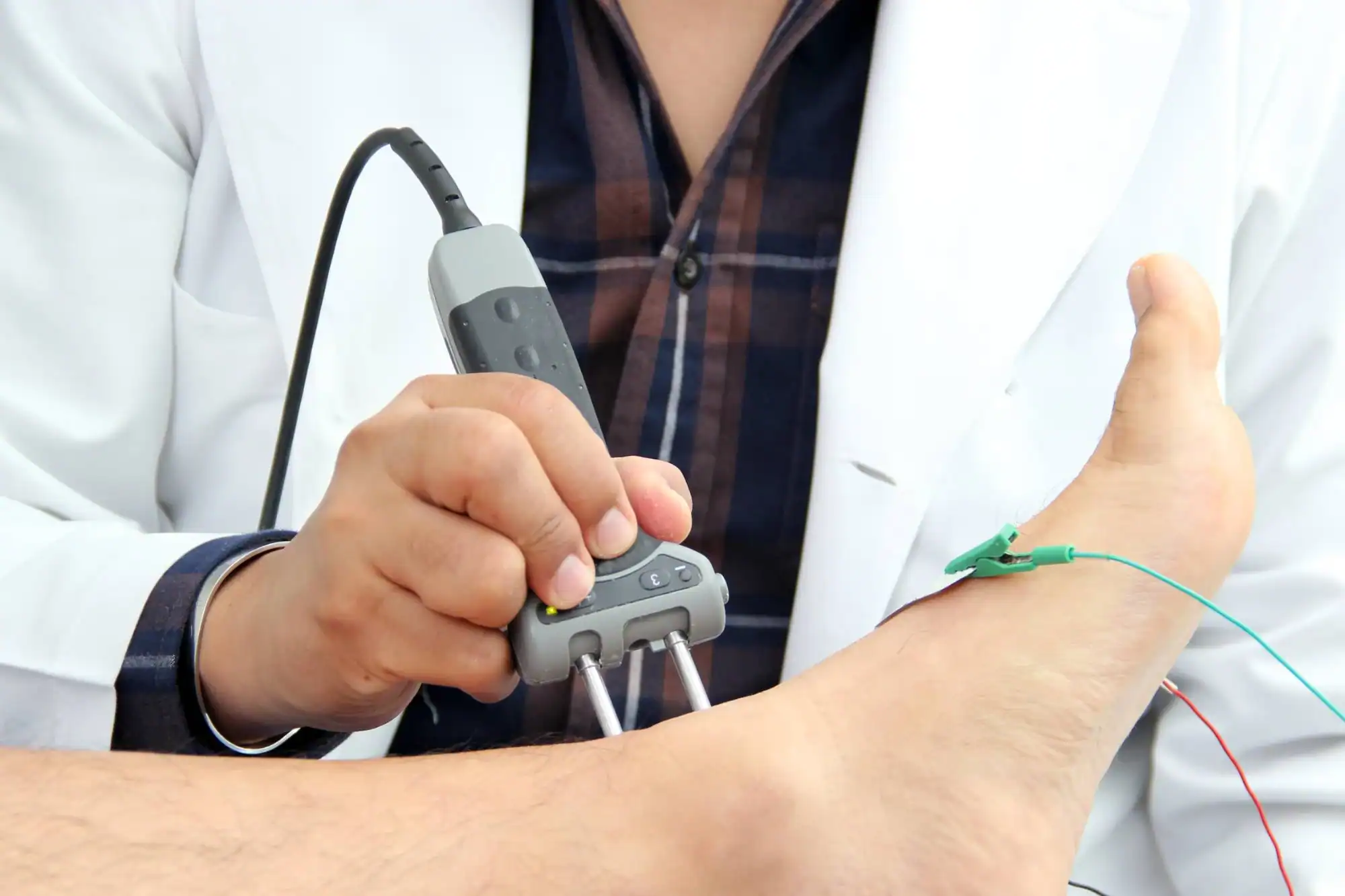
First, we review your symptoms and medical history in detail. We want to understand not just what you’re feeling, but when it started, what makes it better or worse, and how it’s affecting your daily life.
The actual testing involves two main components. Electromyography measures the electrical activity in your muscles using thin needle electrodes. Nerve conduction studies use surface electrodes to measure how quickly and effectively your nerves transmit signals. Both tests provide objective data about nerve and muscle function.
Most patients complete testing within 45-60 minutes. You’ll get preliminary results immediately, with a detailed report following within 24-48 hours. We explain everything in plain language – no medical jargon that leaves you more confused than when you started. You’ll leave knowing exactly what the tests revealed and what your next steps should be.
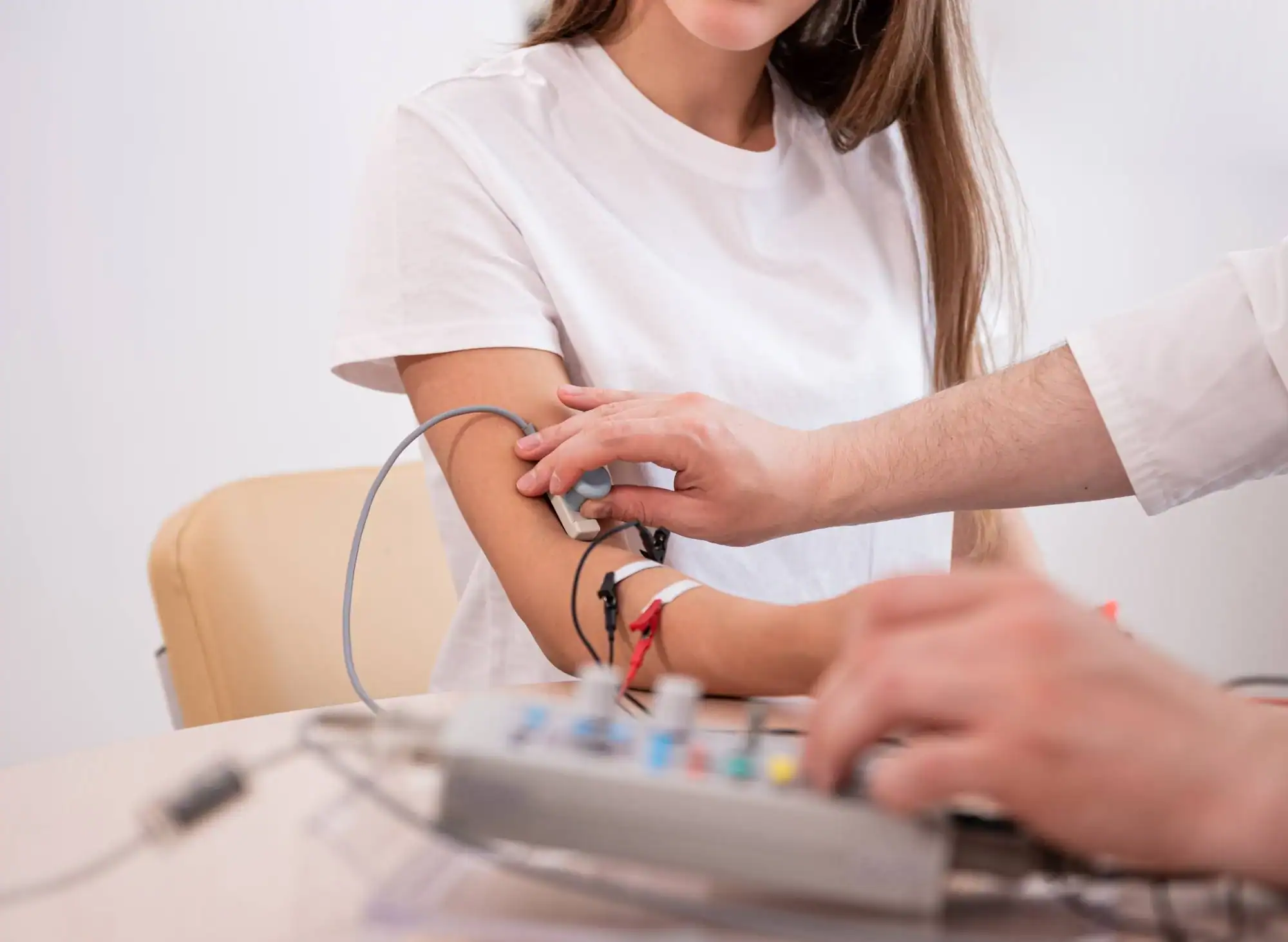
Ready to get started?
Your nerve and muscle testing includes a complete neuromuscular evaluation designed to identify the root cause of your symptoms. We test multiple nerve pathways and muscle groups to build a comprehensive picture of what’s happening.
The process covers both motor nerves (which control muscle movement) and sensory nerves (which handle feeling and sensation). This dual approach is crucial because many conditions affect both types of nerve function, and partial testing often misses important details.
You receive detailed documentation of all findings, including specific measurements of nerve conduction velocities and muscle response patterns. This objective data becomes the foundation for your treatment plan, whether that involves physical therapy, medication, injections, or other interventions. We also coordinate directly with your referring physician and any specialists involved in your ongoing care.
